Essential Techniques for Sending Screenshots
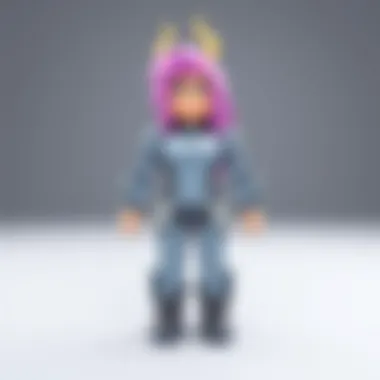
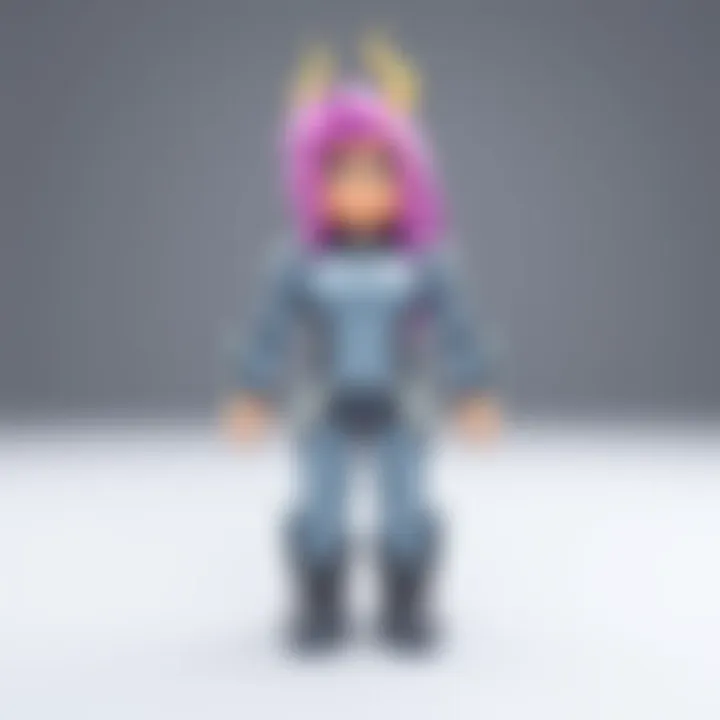
Intro
In today’s digital landscape, screenshots have become a crucial tool for communication, collaboration, and creativity. They serve various purposes, from capturing a memorable moment in a game to providing visual evidence of a technical issue. As the saying goes, a picture is worth a thousand words, and screenshots often convey information more efficiently than written descriptions alone. This guide aims to demystify the process of sending screenshots across multiple devices and platforms, catering to the distinct needs of both gamers and casual users alike.
This resource will help you navigate the myriad ways to create and share screenshots, offering tips, insights, and technical guidance tailored specifically for users stepping into the world of visual content sharing. We will explore key aspects such as devices, platforms, and user-generated content, all while ensuring that the methods we discuss are accessible regardless of technical skill level.
Gameplay Tips
Basic Controls and Navigation
Understanding how to capture and send screenshots can enhance your gaming experience significantly. For players engaged in platforms like Roblox, knowing the right controls can transform a simple gaming session into a chance to document achievements or share thrilling moments.
Here’s a quick rundown of general control methods:
- On Windows: Press to capture the entire screen, or use to capture only the active window. This image can later be pasted into paint or a document.
- On Mac: Press to capture the entire screen or to select a specific area.
- On Mobile Devices: Most smartphones allow you to take a screenshot by pressing the and buttons simultaneously.
Once you've captured your screenshot, knowing how to navigate to the relevant share options is essential to send it. Each platform may differ in sharing methods, but generally, you’ll either use the share menu built into the app or copy the image and paste it directly into messages.
Advanced Gameplay Strategies
To truly make the most of your screenshot-sharing efforts, consider these advanced tips that will not only improve the quality of your captures but also enhance your overall gameplay experience:
- Optimize Visuals: For the best result, close all unnecessary applications before taking a screenshot. This practice reduces clutter and helps focus attention on what truly matters.
- Edit Your Screenshots: Basic editing tools allow for cropping, highlighting, or annotating your screenshots, making them more engaging for your audience. Applications such as GIMP or even built-in editing tools on your device can be helpful.
- Share Strategically: Post your screenshots in relevant gaming forums or social media platforms such as Reddit or Facebook. Engage with other players by providing context or sharing tips related to the captured moment.
Remember, effective communication through screenshots not only showcases your skills but also fosters a sense of community among players.
User-Generated Content
Highlights of Notable User Creations
The gaming realm is rich with creativity, and many players take screenshot sharing a step further by creating content that others can enjoy and learn from. Showcasing impressive structures, in-game accomplishments, or fan art can elevate a community. Platforms like Pinterest and game-specific forums feature numerous user-created screenshots that demonstrate the diverse talents within gaming circles.
Tips for Creating Engaging Games
If you’re looking to contribute to the community by sharing your gameplay or promoting your creations, keep these tips in mind:
- Focus on Quality: Gamers are often drawn to visually stunning and skillfully captured moments. Ensure that your screenshots are clear and well-composed.
- Engage Your Audience: When sharing content, don’t be afraid to ask for feedback or encourage viewers to share their thoughts on your gameplay.
- Leverage Social Media: Many players utilize Twitter or Instagram to showcase their screenshots, utilizing relevant hashtags to increase visibility.
By learning the various methods for capturing and sharing screenshots, you’ll not only enhance your personal gaming library but also contribute to the vibrant community within platforms like Roblox. Your shared experiences can inspire others and potentially foster new connections with like-minded gamers.
Prelude to Screenshots
Screenshots have become an invaluable tool in our digital interactions. These static images capturing your screen not only serve practical purposes but also enhance the way we communicate online. As we delve into this guide, we’ll explore the myriad reasons one might find oneself clicking that often-overlooked key or button. Understanding how to send and utilize screenshots effectively empowers users across all platforms, ensuring clear communication and precise sharing.
What is a Screenshot?
A screenshot, at its core, is a visual snapshot of whatever appears on your display at a specific moment in time. This simple yet powerful feature allows users to convey information without needing to transcribe long chunks of text. The ability to visually capture screens has transcended its original function, evolving into a fundamental part of digital literacy.
"A picture is worth a thousand words," they say, and in the digital world, a screenshot can distill complex information into an easily digestible format.
Reasons for Taking Screenshots
Screenshots aren’t just for tech-savvy users or dedicated gamers; they serve various purposes across different contexts. Here are some common reasons for taking them:
Documenting Gameplay
When it comes to documenting gameplay, screenshots play a monumental role. Players often want to share their achievements, whether it’s scoring a high level, uncovering a hidden item, or simply showcasing an epic moment in a game. This practice is not just about bragging; it fosters community engagement and provides visual proof of skills.
A key characteristic of documenting gameplay is the instant capture of thrilling moments. You can quickly snap a screenshot and share it with friends or on platforms like Reddit to show off your prowess. The advantage here lies in the visual impact; a well-timed screenshot can relay excitement that words alone may fail to convey. However, one drawback may be the potential for image overload in online forums, where many players may share too many screenshots, leading to clutter.
Sharing Information
In an era where information overload is a constant challenge, screenshots offer a straightforward method of sharing vital details. For example, when someone encounters an error message, taking a screenshot allows them to send that image directly to tech support, aiding in diagnosing the issue. The convenience of sending visual evidence often expedites troubleshooting.
This method holds value in educational environments too, as students and teachers can share resources quickly. The key characteristic here is its efficiency. A simple screenshot replaces lengthy explanations, trimming down communication time. Yet, one potential downside might be the ambiguity of context since not all viewers may grasp the situation without prior knowledge.
Creating Content
Creating content, especially for platforms like YouTube or social media, heavily relies on the effective use of screenshots. Creators use these images to illustrate points, share tutorials, and provide visual references that enrich their storytelling.
One unique feature of creating content with screenshots is that they can serve as both functional and aesthetic elements within a piece. Content creators can highlight specific points or moments that resonate with their audience, fostering a deeper understanding. Nevertheless, the reliance on screenshots can lead to a risk of over-relying on imagery, potentially diluting the narrative with too much visual distraction.
Methods of Taking Screenshots
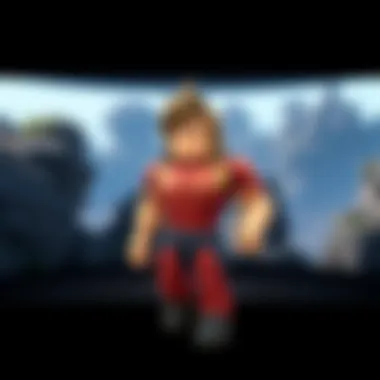
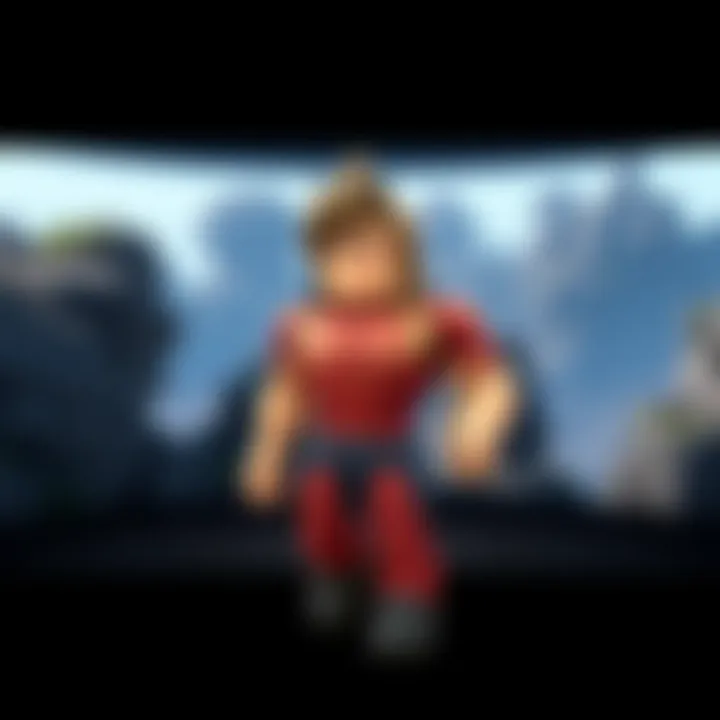
In the modern digital landscape, capturing what you see on your screen is just a pressing of a few buttons away. Whether it's to share a moment in a gaming session, provide tech support to a friend, or make a visual point in a presentation, knowing how to take a screenshot is a vital skill. This section delves into various methods of capturing screenshots across different devices, emphasizing the unique characteristics and benefits of each method. From keyboard shortcuts to mobile device techniques, understanding these methods will serve not just the tech-savvy but also anyone needing to communicate visually in today’s fast-paced environment.
Using Keyboard Shortcuts
Keyboard shortcuts are often the quickest methods to capture your screen's image. Available predominantly on computers, they save you time and reduce frustration, especially in urgent scenarios. These shortcuts allow for immediate screenshot functions without navigating through multiple menus. They are particularly beneficial because they can be remembered easily and executed swiftly, making them a favorite among both casual and professional users.
Windows Systems
For users on Windows, the screenshot capabilities are robust and straightforward to access. The most commonly used shortcut is Windows Key + PrtScn, which captures the entire screen and automatically saves it to the "Pictures\Screenshots" folder. This built-in functionality is favored by many as it simplifies the process significantly. Additionally, the Alt + PrtScn combination captures only the active window, which can be beneficial when trying to highlight a specific application.
The ease of use and seamless integration into the operating system makes Windows shortcuts highly popular. However, some might find the need to manually save images cumbersome, as there's no direct paste function with the standard key combinations.
Mac Systems
On the other side of the fence, Mac users have their own set of useful shortcuts. The most versatile combination is Command + Shift + 4, which allows selection of a specific area to capture, while Command + Shift + 3 takes a picture of the entire screen. A distinctive feature of the Mac system is the option to directly save screenshots to the clipboard by adding the Control key to any of the aforementioned combinations. This flexibility enhances user experience significantly as it offers options for quick sharing or editing directly into documents. The only downside might be the learning curve for non-native users who are less familiar with these shortcuts.
Using Built-In Tools
Built-in tools are another pathway to execute screenshots efficiently, catering to users who prefer a graphical interface over keyboard shortcuts. These tools often come with additional features like annotation and editing, making them quite useful for presenting information neatly.
Snipping Tool on Windows
The Snipping Tool, a feature in Windows systems, provides users with a more visual approach to taking screenshots. It allows for different snip types: free-form, rectangular, window, and full-screen snips. This versatility is a significant benefit, especially for users who need to capture specific parts of their screen or want to create customized images. Moreover, users can annotate their snips with text and highlight areas, making the Snipping Tool ideal for creating educational content or support documentation. However, some may find that the interface can feel outdated compared to newer options available.
Screenshot App on Mac
Mac devices feature the Screenshot app, which has become a popular choice among users who need more robust capturing options. Accessible via Command + Shift + 5, this tool allows for various capturing modes: from the entire screen to specific windows or portions. Unique to the Screenshot app is the ability to set timers or even record your screen, an excellent feature for tutorials or gameplay. The convenience of having a built-in app that makes sharing moments easier cannot be overstated. However, some users might argue that the availability of too many options can be overwhelming at first.
Mobile Device Methods
With the prevalence of smartphones, capturing the screen on mobile devices is just as essential. Users on these platforms have quick and easy methods tailored to their operating systems, making it accessible for anyone to take a screenshot on the go.
iOS Devices
On IOS devices like iPhones or iPads, taking a screenshot is merely a matter of pressing the Side button + Volume up simultaneously. This method is simple and quick, allowing users to capture what they see without difficulty. Notably, screenshots are saved directly to the Photos app, making it easy to share or edit. A unique feature of IOS is that upon taking a screenshot, options to edit or annotate pop up, encouraging users to engage with what they’ve just captured. This instant functionality, however, might not be evident to a new user, and some can accidentally dismiss the editing screen too quickly.
Android Devices
On Android, taking a screenshot varies slightly by manufacturer, but the general method of simultaneously pressing the Power button + Volume down is widely accepted. This universal approach is convenient as it doesn’t require any additional apps and ensures users can react quickly in dynamic situations. Screenshots are automatically saved to the gallery, easily accessible for sharing. However, some older devices may not support this feature efficiently, leading to frustrations among users who are unaware of alternate methods, such as utilizing the Screenshot tool integrated into system settings.
Third-Party Applications
For those seeking more features and functionality beyond the built-in options, third-party applications provide an alternative route for screenshot capture and editing. Users who require additional tools for their screenshots often explore these applications which come with various features suited to specific needs.
Screen Capture Software
Screen capture software, such as Snagit or Greenshot, offer a wealth of functionalities that go beyond basic screenshoting. These tools allow for easy editing, annotating, and even sharing within teams, making them essential for professionals who need to create visual content regularly. A key characteristic of these tools is their ability to capture scrolling windows, which is especially useful for lengthy web pages or documents. Nevertheless, the need to download additional applications can be a drawback, particularly for individuals who prefer not cluttering their devices with software they might not frequently use.
Editing Tools
Editing tools such as Lightshot or PicPick enhance screenshot capabilities significantly. These applications provide a simple way to not only capture screen images but also edit them in real-time, allowing for impressive annotations and modifications before sharing. Users often appreciate the ability to customize their screenshots in various ways, from adding shapes to text overlays. However, users should be aware that relying on external editing software could introduce a learning curve and may have limitations based on system compatibility.
By exploring these methods of taking screenshots, one can appreciate the various options available, whether through simple keyboard shortcuts or more advanced tools. Understanding the strengths and weaknesses of each can empower users to choose the most suitable method for capturing the visual information they need.
Transferring Screenshots
Transferring screenshots holds significant value in today’s digital age. Each person, from gaming enthusiasts to business professionals, often needs to share visual information quickly and effortlessly. Ensuring that these screenshots reach their intended audience in the best possible form is vital. This section delves into various methods of transferring screenshots, emphasizing not just how to send them, but also the implications of each method. Speed, quality, and ease of use all come into play when deciding how to share screenshots effectively.
Sharing via Email
Attachment Methods
When it comes to email, some folks might think that attaching a screenshot is child’s play, but there's quite a bit of finesse involved. Attachment methods allow users to send files directly to recipients, maintaining their original quality and format. This straightforward approach is particularly beneficial for those who prefer to send high-resolution images without any alterations.
- Key Characteristics:
- Easy to Use: Attachments are standard in most email services, making them familiar for users.
- Format Preservation: The original screenshot properties are retained, hence preserving quality.
Despite these advantages, there are drawbacks. For instance, many email providers have strict file size limits—think before you send that hefty image! Additionally, sending multiple attachments can clutter inboxes, sometimes leading to a poor user experience.
Inserting into Message Body
Inserting a screenshot directly into the body of an email creates instant engagement. It allows recipients to immediately view the image without needing to download an attachment first, which is quite appealing for quick discussions or when collaborating on projects.
- Key Characteristic:
- Immediate Visual Access: Recipients can see the image right away, making it an effective choice for conveying information quickly.


However, with this method, a trade-off exists. Directly embedding images can increase compatibility issues across different email clients. Some folks might not see the image as intended, depending on their reading platform.
Using Messaging Apps
Popular Platforms
Messaging apps are riding high in the ranks when it comes to quick sharing. People often turn to platforms like WhatsApp, Discord, or Slack to shoot over screenshots in a matter of seconds. These platforms allow instantaneous sharing, making them robust for real-time communication.
- Key Characteristic:
- Real-Time Sharing: With notifications enabled, the receiver can see screenshots almost instantly.
Though this method is highly effective, one might miss the formality and attention to detail that emails often provide. Additionally, screenshots shared via these platforms might be compressed, potentially reducing quality, something particularly noticeable for gamers wishing to showcase their high scores or achievements.
File Size Considerations
When sharing through messaging apps, size limits often rear their ugly heads. Most apps restrict file sizes, which can prompt users to compress images before sending, leading to potential loss of quality. This is a crucial consideration, particularly for users looking to showcase detailed work.
- Key Characteristic:
- Proximity of sharing: The immediacy of sharing allows for dynamic conversations.
However, the potential downsides are clear. If quality is paramount, users may need to adjust settings or resort to multiple uploads, which can become tiresome.
Social Media Sharing
Optimizing Images for Platforms
In the realm of social media, optimizing screenshots is paramount. Each platform has distinct image dimensions and file size criteria, so it becomes necessary to adjust accordingly. This ensures that the screenshot looks its best, drawing more engagement from audiences.
- Key Characteristic:
- Visibility: Images that are optimized often receive more views and interactions.
But keeping up with these requirements can sometimes feel like a juggling act. The need to constantly adjust images means potential delays in sharing, and the time spent doing it can affect immediacy in communication.
Engaging with Content
Once a screenshot is shared, engagement often follows. This fosters conversations around content, whether it’s gameplay strategies or project updates. Engaging with posted content is crucial because it builds a community and invites feedback.
- Key Characteristic:
- Community Building: Inviting comments and shares can enhance the original message’s impact.
On the flip side, sifting through comments can also lead to negative exchanges. Not every interaction is constructive, and one must tread carefully when engaging with followers, ensuring a positive and inclusive atmosphere.
Cloud Storage Solutions
Using Google Drive
Google Drive provides a seamless solution for those needing to share screenshots often. The ability to store, organize, and share files through links makes it an outstanding choice for users wanting a centralized location for their images.
- Key Characteristic:
- Centralized Storage: It allows easy access and management of multiple screenshots.
However, its reliance on internet connectivity can become a hiccup for users in areas with unreliable service. Users may also need to manage permissions effectively to ensure the right people view their images, which can be somewhat cumbersome.
Using Dropbox
Dropbox offers another strong option for users looking to share screenshots. Its user-friendly interface allows easy file sharing through links, and files stored maintain their original quality. This platform is a favorite among professionals due to its practicality and reliability.
- Key Characteristic:
- Quality Preservation: High-resolution images remain intact when uploaded.
Nevertheless, Dropbox can become a paid service for users needing more storage, which may not sit well with everyone. In addition, users might find themselves navigating challenges with link-sharing permissions if they aren’t familiar with the platform's settings.
In summary, transferring screenshots involves a range of methods, each with its unique advantages and challenges. Understanding these aspects aids users in choosing the right method for their specific needs.
Best Practices for Sending Screenshots
When sharing screenshots, adhering to certain best practices can can amplify the effectiveness of your visual communication. This segment delves into why these practices matter, focusing on the quality, organization, and security of screenshots. By implementing these guidelines, you not only enhance clarity but also ensure that your intended message gets across seamlessly.

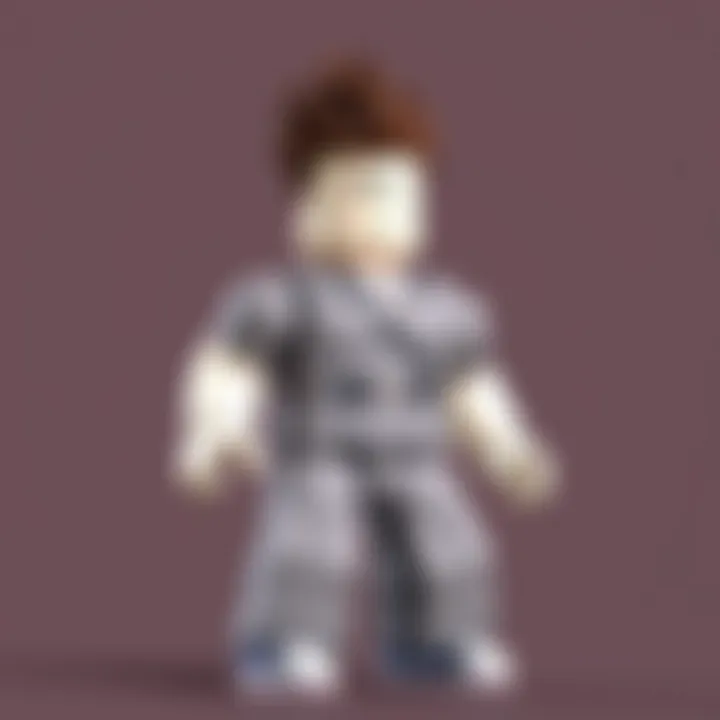
Image Quality Considerations
File Formats
Choosing the right file format for your screenshots can make or break the quality. PNG and JPEG are two of the most popular formats. PNG is great because it supports transparency and maintains high quality, making it ideal for images with text or sharp edges. It’s lossless, meaning no data is lost during compression. On the other hand, JPEG excels in reducing file size, which is beneficial when sharing via email or messaging apps, though it may compromise some quality, especially with rich colors and details. Think about your target audience: if clarity matters, PNG might be your best bet.
Resolution Guidelines
Resolution refers to the amount of detail an image holds, often measured in pixels. High-resolution images look crisp and clearer, which is essential for communicating intricate details. Aim for at least 72 DPI (dots per inch) for web, but more is preferred, especially for presentation or print. Higher resolution also helps prevent blurry images, which can muddle your message. However, do keep an eye on file sizes; too high a resolution can lead to hefty files that are hard to share easily.
Organizing Your Screenshots
Folder Management
Keeping your screenshots organized is vital for efficiency. Create separate folders for different projects or categories; this diminishes the time spent searching for specific images. Use a clear hierarchy, like having a main folder for "Screenshots" and subfolders for categories such as "Games" or "Work." This system helps maintain order and makes retrieval a breeze, saving you from the chaos that often descends when your files pile up.
Naming Conventions
How you name your files can significantly affect your organization. Use descriptive titles that include the date and subject, like "GameScreenshot_2023-10-05_Fortnite.jpg." This method allows you to quickly identify images without opening them. Moreover, it reduces confusion when sharing with others, making collaboration more effective. Skimping on this step can lead to unnecessary friction in workflows, as vague filenames can mislead or confuse.
Maintaining Privacy and Security
Editing Sensitive Information
In a world where privacy is paramount, editing out sensitive information from your screenshots cannot be overstated. Whether it's personal data or confidential project details, always double-check your images before sharing. Using tools like Paint or Preview to redact information ensures you're not unintentionally exposing anything you shouldn't. This is particularly crucial in professional settings; a small oversight can have big repercussions.
Using Watermarks
Applying watermarks to your screenshots is another layer of security. It helps assert ownership and can deter unauthorized use, particularly when sharing in public forums or social media. Utilizing a subtle watermark—perhaps a logo or your username—can send a clear message of ownership while still allowing the content to be viewed and appreciated. The drawback, however, is that if done clumsily, it could distract from the very message you intend to convey.
Troubleshooting Common Issues
When using screenshots for capturing moments on your computer or mobile device, you may run into a few bumps in the road. Problems can arise at any point in the process, be it a faulty screen capture or the size of the image that can become a headache. Understanding how to effectively troubleshoot these common issues can enhance your experience and ensure smooth sharing of visual content.
Screen Capture Not Working
Screen captures not functioning correctly can be incredibly frustrating, especially when you’re in the heat of the moment trying to save something important. It’s not uncommon for users to face such obstacles. Here are a couple of important steps to consider getting that capture to work again.
Check Permissions
One critical aspect to consider is permissions. Some systems require that the user grants specific permissions to applications to access the screen for capturing. This step is vital for ensuring the relevant commands function properly.
The key characteristic here is that without the right permissions, the screen capture tool might not function at all. This aspect is beneficial as it reminds users to manage their application access diligently, ensuring they stay in control of their device’s functionality. The unique feature of checking permissions is its straightforwardness; you can usually do this within the settings, allowing you to quickly identify any discrepancies. However, one downside might be that for novice users, navigating permissions settings can be a bit of a maze.
Restart Device
When all else fails, restarting your device can sometimes be a magic fix. This can clear temporary glitches that may interfere with the screen capture function, providing a fresh start. The main characteristic of this approach lies in its simplicity—just reboot and see if the problem resolves itself. It’s a popular choice because it requires no special skills or knowledge; anyone can restart their device. The unique feature here is its universality—this method works across various devices and operating systems. But, like everything, it isn’t a guarantee; sometimes, deeper issues may still linger.
Screenshot File Size Too Large
Another obstacle some users face is the file size of screenshots. Large files can create roadblocks, particularly when it comes to sharing over email or instant messaging platforms. If you find yourself caught in this situation, the following options can help you trim those hefty files.
Compressing Images
One solution is compressing images. This involves reducing the size of the screenshot without significantly compromising its quality. Key to this method is that it allows for easy sharing without the worry of hitting size limits. Users often adopt this method because it helps streamline the process when sending files to others. A unique advantage is that there are many tools available—ranging from online services to built-in options in photo editing software. However, the downside could be that if over-compressed, the image quality may suffer, leading viewers to miss out on essential details.
Changing File Format
Changing the file format can also come in handy. For example, converting a screenshot from a PNG to a JPEG often results in smaller file sizes. The key characteristic here is flexibility; different formats suit different needs. This choice is popular because it can be done quickly and often without loss of significant quality. The unique feature of file format changes lies in the fact that it can lead to smaller file sizes efficiently. However, one must keep in mind that some formats may not support transparency or other features present in original formats, which could limit usability.
"A wise person once said that the solution to a problem often lies in understanding its root cause. Take the time to investigate!"
Finale
When it comes to sharing screenshots, the process can sometimes feel like navigating a maze. However, understanding the steps and best practices can significantly enhance your experiences, especially for gamers in communities like Roblox. In this article, we covered various methods to capture and send screenshots, from elementary shortcuts to more sophisticated third-party applications. Each method’s distinct advantages showcase that there’s more than one way to achieve the same goal.
Taking screenshots allows users to encapsulate moments, share information, and communicate effectively. Cultivating the right habits not only enriches your interactions but also preserves security and privacy in the ever-connected world. As screenshotting becomes an ingrained part of daily digital communication, adhering to a set of best practices can make a world of difference.
"A picture is worth a thousand words." But when sharing that picture, knowing how to do it right is invaluable.
Recap of Essential Points
- Methods of Taking Screenshots: We looked into various ways to capture screenshots, from using keyboard shortcuts on Windows or Mac to utilizing built-in tools like the Snipping Tool.
- Transferring Screenshots: Several avenues exist for sharing captured images, such as through email, social media, or cloud storage, with each method providing distinct features and considerations.
- Best Practices: Maintaining quality and privacy was stressed, highlighting the importance of image formats, resolution, and the prudent management of screenshots.
- Troubleshooting Issues: Common issues like large file sizes and screen capture failures can be resolved with straightforward solutions, ensuring a smoother experience.
Future Considerations for Screenshot Sharing
The future of screenshot sharing is tied to evolving technologies and user needs. Here are some thoughts on where this practice might lead:
- Integration with AI: Tools that automatically enhance screenshot quality or identify key elements could revolutionize how we share images.
- Increased Privacy Options: As privacy concerns grow, we may see more features enabling users to edit out sensitive information with greater ease.
- Cross-Platform Compatibility: As different applications and devices continue to emerge, a seamless experience will be vital. Users might expect tools that facilitate easy sharing across diverse platforms without losing quality.
To conclude, efficient and effective methods for sending screenshots in any digital environment are crucial. Adapting to advancements while being mindful of privacy and security will undoubtedly enhance the experience for gamers and everyday users alike.







